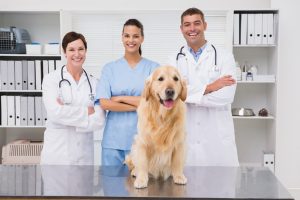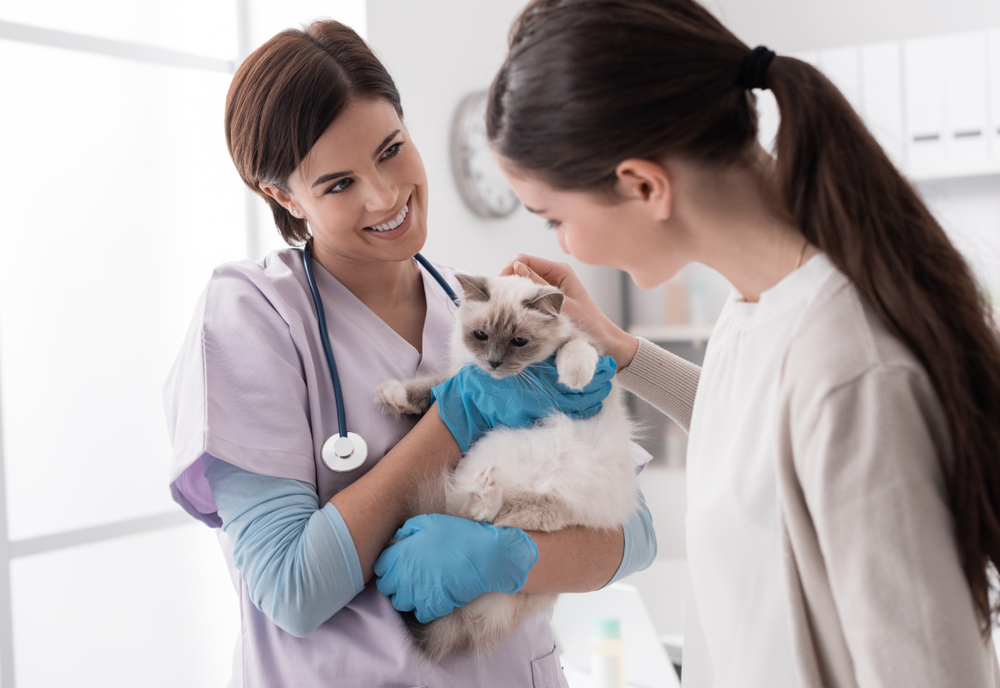As pet owners, we entrust our furry companions to the care of veterinarians. But have you ever wondered what goes on behind the scenes of a veterinarian practice? A typical day in the life of a veterinarian involves much more than just examining pets. From performing surgeries to counselling pet owners, veterinarians have a lot on their plate.
In this blog post, we’ll take a behind-the-scenes look at a typical day in the life of a veterinarian. We’ll explore the different roles and responsibilities that come with the job, as well as the challenges and rewards that make this profession so fulfilling. Whether you’re a pet owner or just curious about what happens at a veterinarian practice, keep reading to discover what really goes on behind the scenes.
Morning Routine
As with any profession, the day of a veterinarian starts with a routine. One of the most important parts of a vet’s morning routine is checking on the animals under their care. They start by examining any patients who stayed overnight and checking their vital signs, administering medication, and providing food and water.
Next, vets need to review their appointments for the day and prepare for any surgeries, procedures, or examinations that they will be performing. They also need to review any test results from previous days, make phone calls to pet owners to discuss treatment plans, and ensure all necessary supplies and equipment are ready.
In addition to patient care, a veterinarian also needs to manage their staff and ensure everyone is aware of their responsibilities for the day. This includes delegating tasks such as cleaning, organising, and preparing for appointments.
Overall, a vet’s morning routine is critical to ensuring that their patients receive the best possible care and that the clinic runs efficiently. It sets the tone for the rest of the day and allows vets to focus on providing excellent care for their animal patients.
Exam Room Visits
One of the most crucial parts of a veterinarian’s day is examining patients in the exam room. These visits are where the vet can diagnose and treat a variety of ailments or provide preventative care. The vet will typically begin by taking a thorough history of the pet’s health and any concerns the owner may have.
The next step is a complete physical examination. During the exam, the vet will look for any signs of illness, including weight loss, abnormal masses, or abnormalities in the pet’s gait. They will check vital signs such as the heart rate, respiratory rate, and body temperature.
Depending on the pet’s age and health, the vet may recommend additional diagnostic tests, such as blood work, urinalysis, or imaging. The vet may also administer vaccinations, prescribe medication, or discuss dietary and lifestyle changes to promote optimal health.
Overall, exam room visits are a critical part of a veterinarian’s day as they allow them to assess the pet’s health and well-being, provide treatment, and build a strong relationship with both the pet and owner.
Surgery
Surgery is an important aspect of veterinary practice, and many veterinarians perform surgeries regularly. The types of surgeries performed can vary greatly, from routine procedures such as spaying and neutering to more complex surgeries like orthopaedic procedures. On a typical day, a veterinarian may perform multiple surgeries, depending on the size and needs of their practice.
Before a surgery, the veterinarian will often review the medical history of the animal and conduct a physical exam to ensure they are healthy enough for the procedure. During the surgery, the veterinarian will closely monitor the animal’s vital signs, including heart rate, blood pressure, and oxygen levels. Depending on the procedure, the animal may be under general anaesthesia or sedated, and the veterinarian will take great care to ensure their safety throughout the surgery.
After the surgery, the veterinarian will continue to monitor the animal’s recovery, checking their vitals and making sure they are comfortable. They will also provide instructions for at-home care and follow-up appointments to ensure the animal makes a full recovery. Veterinary surgeries can be challenging and require extensive training and skill, but they are a crucial part of keeping our animal companions healthy and happy.
Afternoon Appointments
Afternoon appointments are an essential part of a veterinarian’s day. This is the time when animals that require follow-up visits or ongoing treatments are seen. These appointments can range from routine check-ups to more complex cases that require ongoing monitoring and treatment.
During these appointments, the veterinarian will often need to review the animal’s medical history and assess any changes since the last visit. They may also need to perform additional tests, take new x-rays or ultrasounds, or prescribe new medications.
The afternoon appointments can be especially challenging, as the veterinarian and their team may need to manage multiple cases simultaneously. They must ensure that all animals receive the care they need and that the appointments run on time.
It is also essential to communicate effectively with pet owners during these appointments. The veterinarian must provide clear instructions on how to care for the animal at home, administer any medication correctly, and monitor any symptoms or changes in behaviour.
Overall, afternoon appointments are a crucial aspect of a veterinarian’s day, as they help to ensure that animals receive the ongoing care and treatment they need to stay healthy and happy.

Emergency Cases
In a veterinarian practice, emergency cases can occur at any time, which means that the staff must always be prepared to handle them. These cases can range from severe injuries to sudden illnesses, and they require immediate attention to prevent further harm to the animal. When an emergency case comes in, the veterinarian and the support staff must work quickly and efficiently to stabilise the animal and provide the necessary treatment.
The first step in handling an emergency case is to triage the animal to determine the severity of the situation. This involves assessing the animal’s vital signs, such as heart rate, respiratory rate, and temperature, to determine the level of urgency. Depending on the severity of the case, the animal may need to be moved to a treatment room immediately, or the veterinarian may need to perform emergency procedures in the exam room.
Emergency cases can be stressful for both the animal and the staff, but it’s essential to remain calm and focused. Communication is critical in these situations, and the veterinarian and support staff must work together to provide the best possible care for the animal. Once the animal has been stabilised, the veterinarian will develop a treatment plan and communicate it to the animal’s owner, ensuring that they understand the nature of the emergency and the steps required for ongoing care.
Overall, handling emergency cases is a crucial aspect of a veterinarian’s job, and it requires quick thinking, attention to detail, and a compassionate approach to caring for the animal.
Administrative Tasks
As with any business, a veterinary practice requires a lot of administrative work to keep things running smoothly. This includes managing client records, scheduling appointments, ordering supplies, and handling billing and payments.
In between appointments and procedures, veterinarians and their staff spend time updating patient records, responding to client inquiries, and ordering necessary medications and equipment. They also need to maintain accurate inventory and ensure that their equipment is properly maintained and in good working order.
In addition to these daily tasks, veterinary practices also need to comply with various regulations and maintain appropriate licensure and insurance. All of this behind-the-scenes work is essential to providing high-quality care to their animal patients and ensuring that their clients receive the best possible service.
Closing Time
At the end of the day, after all the appointments and emergencies have been dealt with, it’s time for the veterinary practice to close up shop. This involves completing any remaining administrative tasks, such as updating patient records and billing clients for services rendered.
The staff will also need to ensure that all equipment and supplies have been properly stored and cleaned, and that the clinic is ready for the next day’s patients. This may involve restocking inventory, sanitising the exam rooms, and preparing any surgical equipment that will be needed.
As the last patients and their owners leave, the staff may take a few minutes to decompress and debrief about the day’s events. They may discuss any particularly challenging cases or celebrate any successes, and ensure that any loose ends have been tied up before they lock up and head home.
While the day may be over, the work of a veterinarian practice is never truly done. There will always be more animals in need of care, and the dedicated professionals who work in these clinics are committed to providing the best possible treatment for their patients, day in and day out.
Final Thoughts
The life of a veterinarian is incredibly busy and challenging, but also incredibly rewarding. They work tirelessly to ensure the health and well-being of animals in their care. From morning routines to closing time, their days are filled with a wide variety of tasks and responsibilities.
If you’re looking for a veterinarian practice that truly cares about your pet’s health, look no further than Toorak Road Veterinary Clinic. Our team of skilled and experienced veterinarians and support staff are dedicated to providing the best possible care for your furry friends.
Please do not hesitate to call us today on (03) 9809 2700 or make an appointment.

